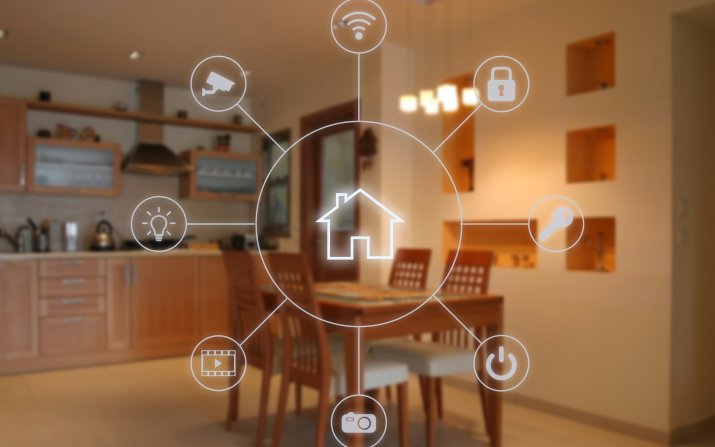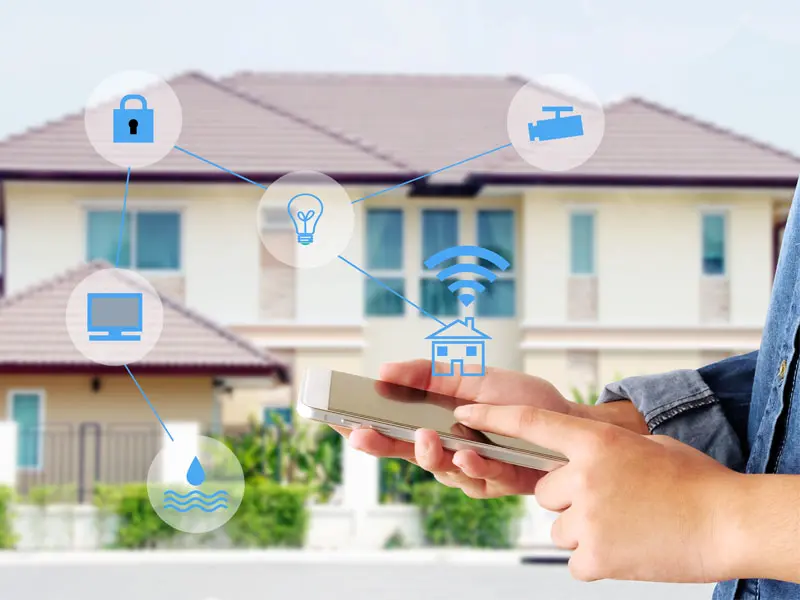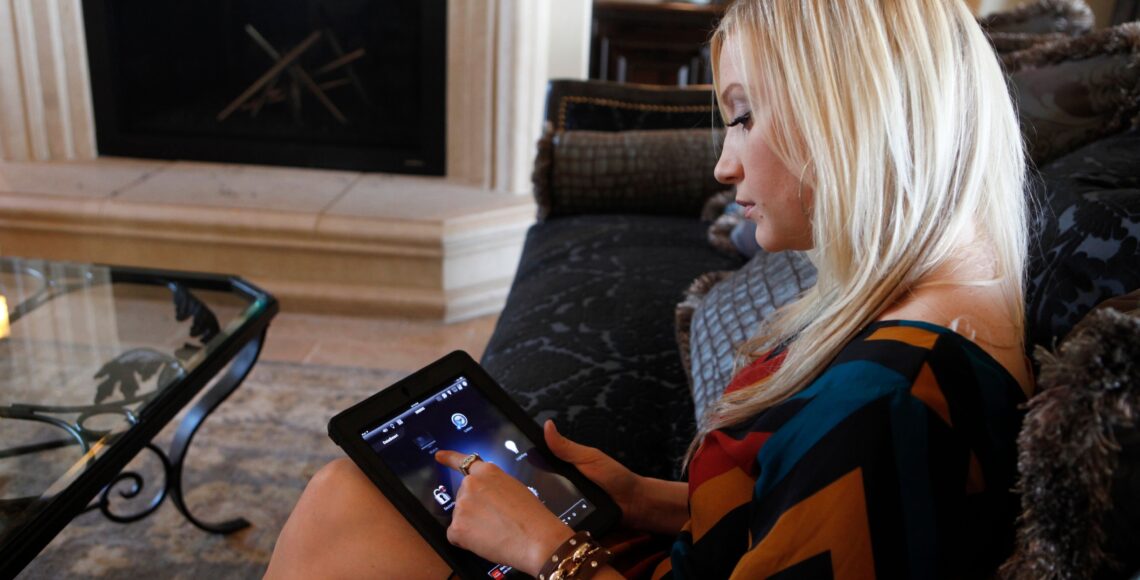What is the difference between a Connected Home and Smart Home?
In today’s world, everything has an app. Your TVs have an app, the wireless sound system has an app, thermostats have an app, and even your lights and shades can have an app. Does having a mobile app to control the different electronic systems and apps mean you have a Smart Home? We argue there’s a difference between a Smart Home and a Connected Home. But what is that difference and is one better than the other?
Connected Home
Almost all home electronic devices today, from TVs to wireless speakers, thermostats, lights, shades, and surveillance cameras have mobile apps to control them. It means that in most cases these devices are either connected to the internet or are controlled via Bluetooth. If you desire to control one of these devices, you’ll need to get your mobile phone or tablet, launch the corresponding app and control the device from there. You may also control it through voice control if you enable one of the various voice control options to work with that particular app. However, this voice control option may be cumbersome as you’ll have very strict and defined commands. If you deviate from the exact command, the voice control system might not be able to execute the command. Another challenge with standalone connected devices is when trying to execute an action that involves multiple connected devices. Watching a movie or a sporting event in your media room is a good example of that. Say you want to watch a movie on a Sunday afternoon, you’d want to turn on the TV and have it go to the right streaming service, i.e. Netflix or Amazon Prime, etc. Next you might want to dim the lights and close the shades or curtains. You might even want to adjust the temperature in the room. If you desire to watch the movie in surround sound, you may need another layer of complexity in the form of an Audio & Video Receiver (AVR) to manage the surround sound. These are a lot of actions to take for a fairly simple task like watching a movie and one can argue that executing all these actions from separate apps doesn’t constitute a Smart Home.
In summary, a Connected Home constitutes multiple electronic devices each controlled via a dedicated, individual app for that device only. Actions that require multiple devices to work cohesively cannot be executed in unison, but rather on app by app basis.
Some examples of Connected Home devices:
- Smart TVs
- Wireless sound systems
- Thermostats
- Lights and dimmers
- Motorized shades
- Smart door locks
- Surveillance cameras
- Smart appliances
In order for these devices to work properly, they usually require a good internet connection and a strong Wi-Fi reception throughout the house. In some cases, smart devices can work on the local network (LAN) without connection to the internet, though in most cases performance and features will be limited.

Smart Home Technology
Smart Homes contain the same devices and apps a Connected Home includes with one major difference, they work cohesively. Also called Intelligent Home Automation, smart home technology refers to either the components or the entirety of a home’s automation monitored by a single, integrated control system. As a result, you can control multiple aspects of your home’s technology with the single push of a button from one digital control panel or a mobile app. In other words, Smart Home Technology aggregates the various apps into one cohesive system. And to push the envelope further, an intelligent home will collect data and provide feedback to learn more about your household habits and then begin catering to them. For instance, when you press the Good Night button by your bedside that turns off all lights and electronics, you’ll also be notified if the garage door was left open, and reminded to arm the alarm. A Smart Home System can also remind you to take the trash or recycling out on garbage day. It can even let you know whether it’s a paper or plastic collection.
Smart Home systems can also monitor leaks, start the sprinklers if the lawn is dry, and of course the Movie action will turn the flat screen to the right input, dim the lights, close the curtains, adjust temperature level and sound volume all with the push of a single button.
When it comes to Voice Control, some of the voice control applications available with Smart Home systems are considered AI. in other words, they learn your commands and adjust accordingly. They’re more flexible in the set of commands and can also identify which room you’re in. So, if you’re entering your bedroom and ask to turn the lights on, the system will know to turn on the lights in the bedroom. With a Connected Home, you’ll have to specify which room you want the lights turned on in. A Smart Home system fitted with voice control can also be commanded to play a specific movie or TV series and the system will execute all the necessary actions to display your selection with a single command. For example, you can command the system to play Ozark season 3 episode 5. The system will then turn on the flat screen to the right input and be prompted to the streaming service carraying Ozark, then select the requested episode and start streaming.
Examples of Smart Home Technology include:
- Wi-fi networks
- Home wiring
- Integrated security systems
- Incorporated music speakers
- Outdoors (sprinklers, retractable awnings, etc.)
- Automated lighting
- Garage door automation
- Motorized shading
- Video systems
- Media rooms
In summary, a Smart Home system contains the same devices and apps a Connected Home includes with the distinction that they’re integrated into one cohesive system. In addition, the main system can monitor the sub-systems and provide feedback to the user.

Do You Need a Connected Home or a Smart Home?

Does purchasing a Connected Home or a Smart Home make more sense, then? Your needs and your budget will determine everything. Consider trying out a few connected devices first if you appreciate the ease of a linked home and are ready to make the switch but are unclear whether it makes sense to proceed with an automated smart home.
#1. How much of your home do you want to connect?
Imagine you only want to use your phone to operate your TV and a few lights. In that situation, sticking with a Connected Home makes sense because it will be the less expensive alternative. At this point, there aren’t many apps to sort through, so a fully integrated Smart Home System won’t be very useful. However, if you want a complete smart system with everything integrated and automated—including temperature control, lighting, water, TV, music, smart appliances, and more—it might make sense to do so.
#2. What is your budget?
A fully automated Smart Home monitoring system will cost more to have professionally installed, and of course, upgrading all systems of your home will cost more than just a chosen few.
#3. Do you want your devices to work cohesively?
If so, a complete Smart Home setup is required. If not, stick with Connected. You’ll still be able to enjoy most of the features of a Smart Home, though it requires more actions and apps to execute a single task.
#4. Do you need Intelligent Voice Control?
For a reliable Voice Control System to function properly, a full Smart Home System is recommended.
The best approach is to test the waters and see if you enjoy the convenience a connected home delivers before deciding how functional you want your home to be. For instance, let’s say you soon desire an increasing number of connected appliances and smart home accessories. If so, this might indicate that you’re prepared to take advantage of the automation and access that a genuinely Smart Home System offers.
Want to know more? Call us at 866.815.0099 or email info@theautom8group.com.


